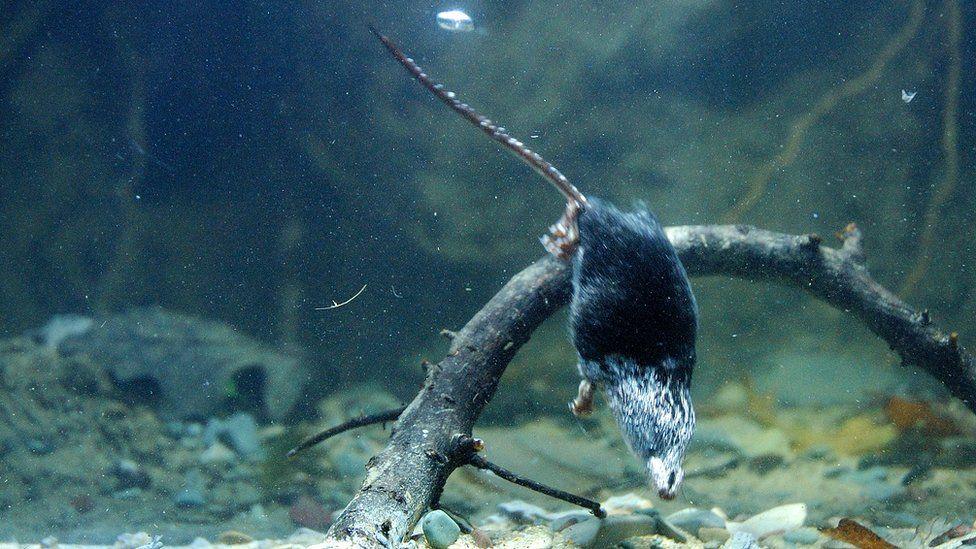Water shrews: Scientist discover how they breathe and hunt underwater
- Published
- comments

A water shrew can be underwater and active for longer than 20 seconds which is a long time for something so small
Biologists have discovered how the world's smallest diving mammal - the water shrew - can breathe and hunt underwater.
They studied DNA samples to examine the animal's diving behaviour and how it's developed over time.
The study, published in the online journal eLife, shows that their DNA has evolved five times over, so they can dive and hunt in freezing water conditions.
Water shrews have very bad eye sight so rely on their sense of smell to keep safe and well fed
To track this evolution, they looked at DNA samples from 71 different species all belonging to a large group of related, insect-eating mammals, collectively called Eulipotyphla.
It's a Latin term which means "the truly fat and blind" and includes hedgehogs, moles and shrews.
Water shrews are warm-blooded and often dive into freezing water looking for food. Scientists have wondered how they survive in the cold temperatures for so long.
The lead scientist on the study, Dr Michael Berenbrink, from the University of Liverpool, said: "They're so tiny, they lose heat so quickly, and they're burning energy at such a high rate, so they have these very high costs, but they can afford that because there are huge gains of having the access to all the insect larvae [in rivers and streams].
"It just shows us what nature can really do."
This is a water shrew diving, they like to hunt for underwater creatures that they find tasty!
Analysis of the DNA meant the scientists could find links between the different animals - including a protein known as myoglobin which the mammals all had in common.
That protein can store oxygen in muscles.
The study showed that the special protein had evolved up to three times in shrews and twice in moles.
"The genetic sequence of just one protein tells us so much about the lifestyle of these animals that we couldn't figure out from fossils," Dr Berenbrink added.
- Published3 February 2021
- Published31 July 2020
